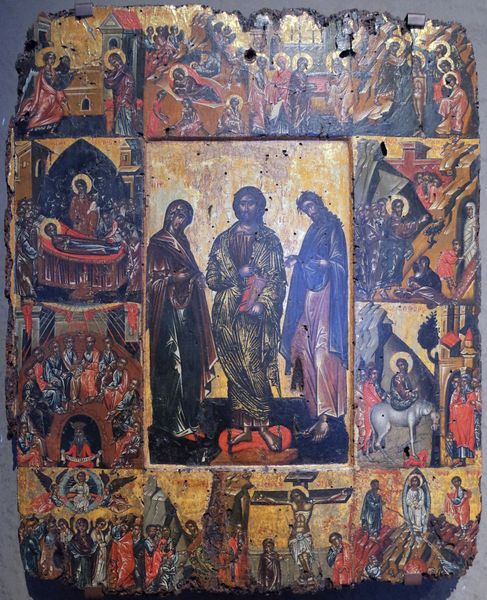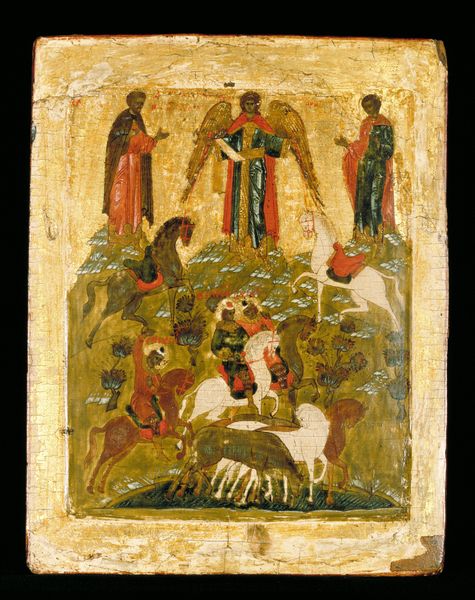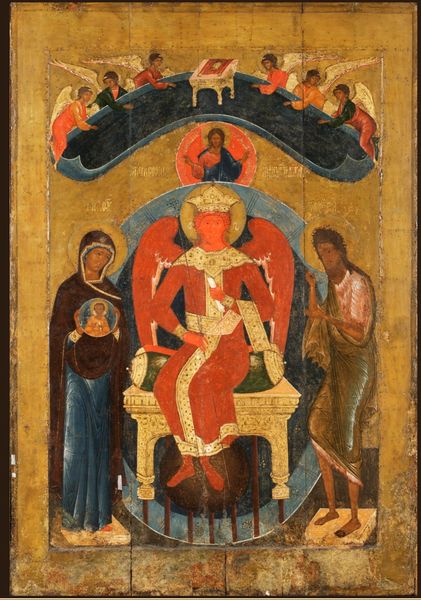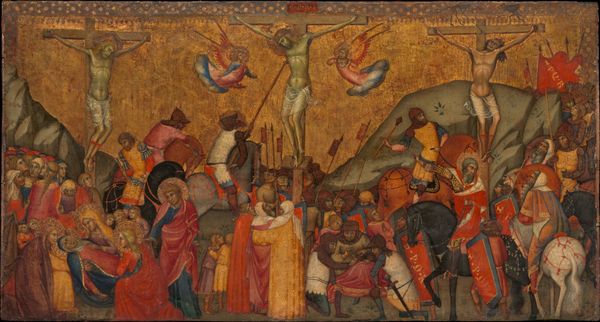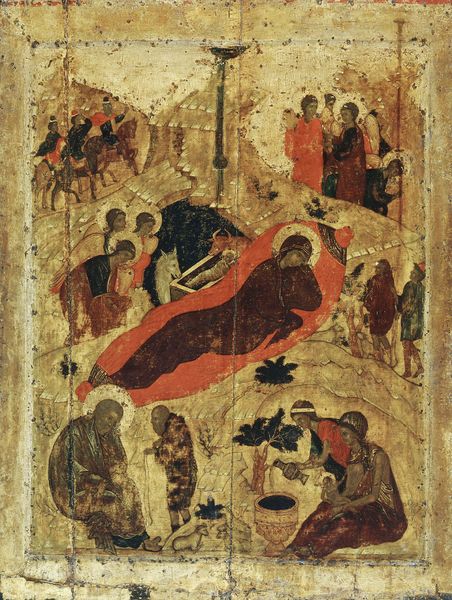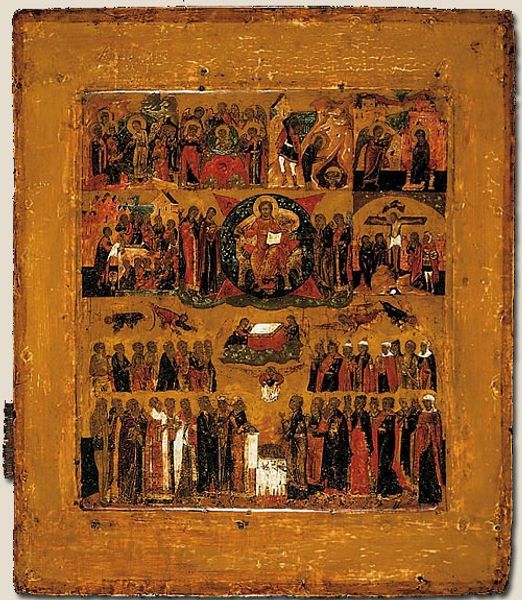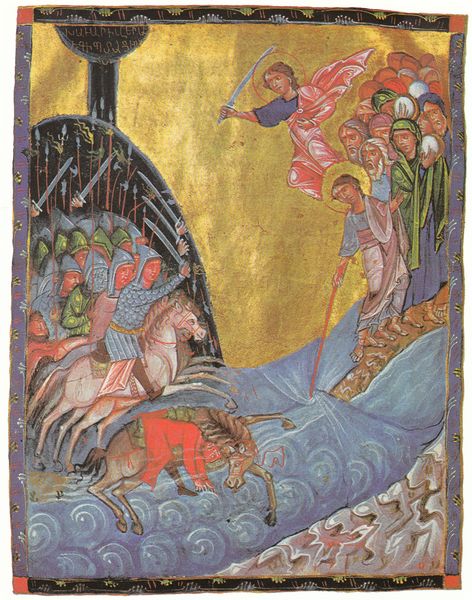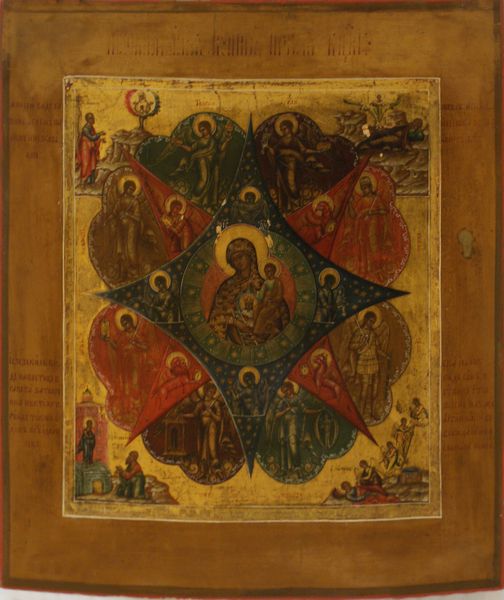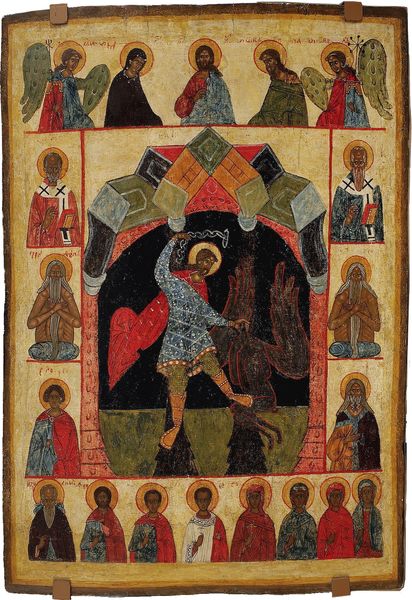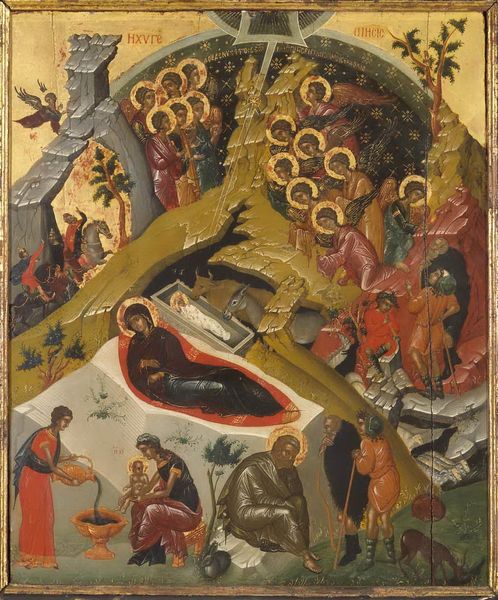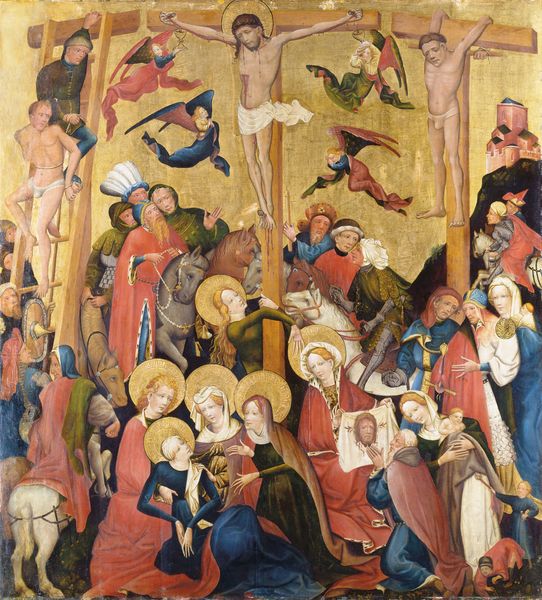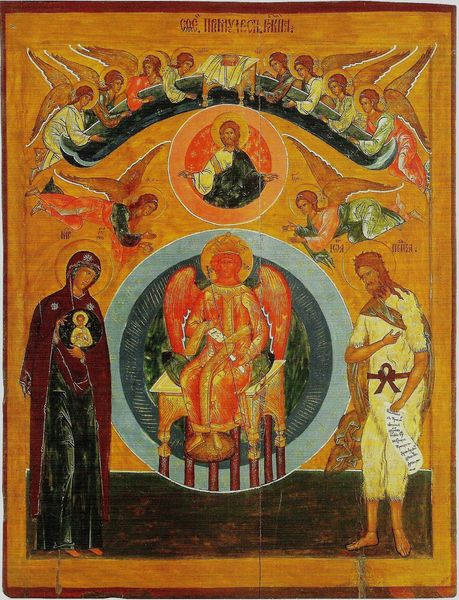
tempera, painting
#
byzantine-art
#
medieval
#
narrative-art
#
tempera
#
painting
#
figuration
#
oil painting
#
history-painting
Copyright: Orthodox Icons,Fair Use
Editor: Here we have "Harrowing of Hell," a tempera on panel from 1350. The scene feels quite active and energetic, everyone is moving, especially Christ in the center. How do we interpret this depiction? Curator: Considering the socio-political context of Byzantine art, these icons served a very public role. The "Harrowing of Hell" wasn’t just a depiction of a religious event, it was a powerful political statement. Can you see how the composition reinforces that? Editor: Well, Christ is certainly the most dynamic figure, pulling Adam and Eve from their tombs. The arrangement directs your eye to him immediately. Is this to emphasize his power and authority? Curator: Exactly. These images were strategically deployed in churches, influencing social behavior and reinforcing religious doctrine. Notice how the figures on the left look like they are part of an earthly hierarchy too. Editor: They do have an aristocratic bearing, with those ornate robes. Does this influence of political power explain why Christ's pose feels so… triumphant? Curator: Precisely. And that triumph sends a clear message about the power of the church in the face of earthly challenges. How do you see that playing out today? Editor: Interesting to think about the parallel between then and today, regarding the use of images to persuade an audience or to tell a very specific story. It’s something to really keep in mind while analyzing all types of images. Curator: I agree. This reminds us to constantly question the motives and meanings embedded within art, and their ongoing effects.
Comments
No comments
Be the first to comment and join the conversation on the ultimate creative platform.
